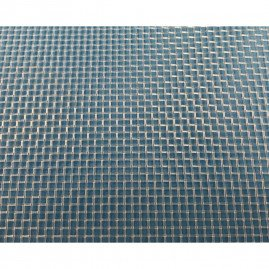
Introduction
An approach researchers apply to assess the sustainability of the environments in our seas is the observation of a wide variety of zooplankton and ichthyoplankton (fish larvae and eggs) at various surface levels of the sea as well as at deep depths. The migration of fish larvae plus lobsters towards and away from nursery areas, the location and size of grownup reproductive populations, the motion of water currents, and the final product of this plankton at the top of the food chain may all be significantly influenced by assessments of this plankton. The Neuston and Bongo nets are extremely useful when collecting plankton samples. The manta net, also known as the Neuston net, is used to gather specimens that come from the ocean’s top surface layer because of its manta ray-inspired design. After a neuston tow, the tiny creatures caught at the cod end of the net are put into a sieve.
After a neuston tow, the tiny creatures trapped at the cod end of the net are put into a filter, where they stay alive for afterward laboratory research. Creatures like crab megalopae (crab larvae), larval fish, and Velella (colonial tentacles found exclusively in the neuston) are among the preserved organisms.
Define what plankton is.
The word “plankton” describes organisms that live most of their lives at the surface of the water. There are microorganisms with sizes that vary from nanometers to multiple centimeters that may be found in freshwater or marine plankton. A basic method for sampling planktonic organisms uses a range of inexpensive, straightforward-to-assemble nets. There are several methods to build a plankton net (see, for instance, Kendall Hunt Publishers’ Microcosmos Curriculum Guide).
Explain Plankton Net.
The tool used to collect specimens of plankton in motionless water bodies is called a plankton net. It includes the components of a cod end, a net with a nylon mesh, towing string, and bridles. Plankton nets (https://adkinstruments.in/categories/oceanography/plankton-nets) are one of the most common, simple, and cost-effective methodologies to sample plankton. The plankton net permits the use of both vertical as well as horizontal methods for sampling. It makes it possible to evaluate plankton in outside water samples using statistical methods (cell density, cell colony, or biomass) and qualitative methods (for instance, chlorophyll- as a primary phytoplankton production).
Plankton Net’s history
In 1816, John Vaughan Thompson constructed a plankton net after arriving in the UK from Mauritius. A modest, unaltered form which he later named Sapphirina’s marine bioluminescence, grabbed his gaze, and he noticed “in accordance with a tremendous obligation towards this lovely little animal, that through its glorious appearance in the water’s surface influenced me to try the application of a muslin hoop-net, that, though it did not succeed to gather me a specimen, triggered up a so overwhelming abundance of marine life that was completely undetectable beneath the sea, as to promote ongoing use of it on every beneficial chance. He published the outcomes of his investigation in six memoirs that he published between 1828 and 1834.
The second known occurrence of Charles Darwin using a plankton net was on January 10, 1832, during the Beagle Survey mission. In his diary, he sketched a representation of the net, and it seems that the image was motivated by the trawl net that John Coldstream had previously described to Charles Darwin in a letter. It’s possible that Robert Edmond Grant in Edinburgh previously introduced Darwin to Thompson’s idea. This “contrivance”, as Darwin calls it, is a bag made of bunting, four feet deep, connected to a semicircular bow, kept upright, and towed behind the ship by lines. The next morning, he stated, “The massive amount of organisms the net collects gives an in-depth justification for how numerous massive creatures can thrive so far from an inhabited region. In spite of being so little and low in the natural hierarchy, several of these tiny creatures have stunning characteristics and vivid colors. It amazes me that something so lovely may seem to have been created for such a trivial purpose”.
Plankton Net components
- Towing line and bridle
The term “towing line and bridle” refers to the top section of a plankton net, which is used to keep the net in position. Triangle bridles are joined to a rope made of nylon towing lines which may be stretched to the user’s chosen level.
- Mesh nylon net
Plankton is filtered out of the water sample using the middle component of the plankton net, which is composed of nylon mesh and has different mesh sizes. Additionally, the funnel-like shape of the structure makes it possible to collect plankton of different sizes in an effective manner. According to the target microorganism to be caught and the condition of the water body, nets are available in a range of mesh sizes. As the mesh size is increased, the extent of the plankton in the water sample diminishes.
For instance, when trying to capture small organisms with a diameter of 50 to 1500 m, a net mesh size of around 25 and 50 m in diameter needs to be used since this is sufficient to effectively filter out the desired organism.
However, under eutrophic water conditions, a plankton net with a mesh bigger than 100 m should be used to avoid the net being blocked.
- Cod end
The cod end is located near the funnel’s bottom, at the lowest plankton net area. Both the opening and closing valves for the collecting cylinder are there.
- Use
A common method for collecting a plankton sample involves towing the horizontal net behind a slowly moving boat. Before collecting plankton with the net, it must be thoroughly cleaned with the test water. The operator has to ensure that the cod end is fully closed before turning the valve into the vertical position. Afterward, the plankton net descends horizontally towards the water’s surface at an angle of the boat which is moving slowly. The whole sample process takes 1.5 minutes. Then, the cod end above it is opened, and the valve is turned horizontally to collect the plankton sample, which is then placed in a sample container. Following collection, the sample may be examined under a microscope to identify the phytoplankton or zooplankton species or cell growth can be used to determine the density of plankton in the water source.
Design of the Plankton Net
Various nets and other equipment have been used to collect phyto- and zooplankton samples. The plankton tow net has supposedly been in use since Johannes Müller created it in 1846, outlasting all other methods for gathering plankton. A metal ring that is attached to a filtering cone pulls the plankton net through the water. Seiwell (1929) gives thorough instructions on how to cut patterns for typical nets. Typically, the filtering substance that makes up the net is some kind of silk bolting cloth, similar to that used for sifting flour. It is numbered from 0000 to 25 based on the number of meshes per linear inch. They vary from conventional weaving in that the strands cross alternately without a binding turn, making it difficult to quickly modify the aperture size. The size of the gaps between the strands is an important consideration since it affects the size of the smallest creatures that the net will be able to catch. As has repeatedly been shown by comparison with centrifuged water and through examination of the stomach lining of animals that consume filter-feeding organisms, many of the species living in the plankton pass readily through the meshes of the finest weave bolting fabric. The coarsest net suited for the size of the creatures that need to be captured should be used after determining their smallest size. Table 59 lists the sizes of standard bolting cloth according to their various diameters for reference. The aperture diameters decrease when submerged over an extended period of time. The varieties of silk used are normal, X (extra heavy), XX (extra double heavy), and XXX (extra triple heavy). The heavier quality caused a little change in the aperture size and the number of meshes per inch for any given number of textiles. Stramin is a sturdy screening material with a 1 mm opening. The heavier strands have certain disadvantages since they make towing through the water more challenging. Usually, stranmin is used with bigger nets or ring trawls.
Plankton net use instructions
Finding a body of water is the first stage, and then figuring out how to get the net through it is the next. For researchers, a boat usually tows a plankton net. If you don’t have access to a boat, what other options do you have to move water via the plankton net? If you decide to tow your plankton net, tie a strong length of rope to the engagement ring so you can pull the net through the water. The plankton will concentrate within the bottle. After towing the plankton net, clean the net’s interior with water to ensure that the plankton is washed into the collecting container. When you’re done, cut the rope holding the bottle’s mouth shut, and carefully remove the bottle. The water in your collecting bottle should be examined. Do the particles still seem in motion after the water stops moving? If you have any zooplankton, that is it. If you brought observational gear to the collecting location, use an eyedropper to place a few drops of water from your collection jar into a viewing dish. Examine the plankton in the viewing dish with a hand lens or a microscope.








